Iceland’s reputation for sublime beauty and natural wonders is well established as is Reykjavik’s status as a cosmopolitan city with its own unique culture and flavor. The country, with a mere 360,000 people – which is about 20,000 fewer folks than live in Lower Manhattan, has also increasingly become known for its talented musicians who run the stylistic gamut. Iceland’s ability to export bands is thanks in no small part to the Iceland Airwaves festival. Since 1999, a decade after beer became legal (but you’re on your own if you want to research that oddity) the four day hootenanny happens annually in early November featuring homegrown talent as well as acts from around the world.
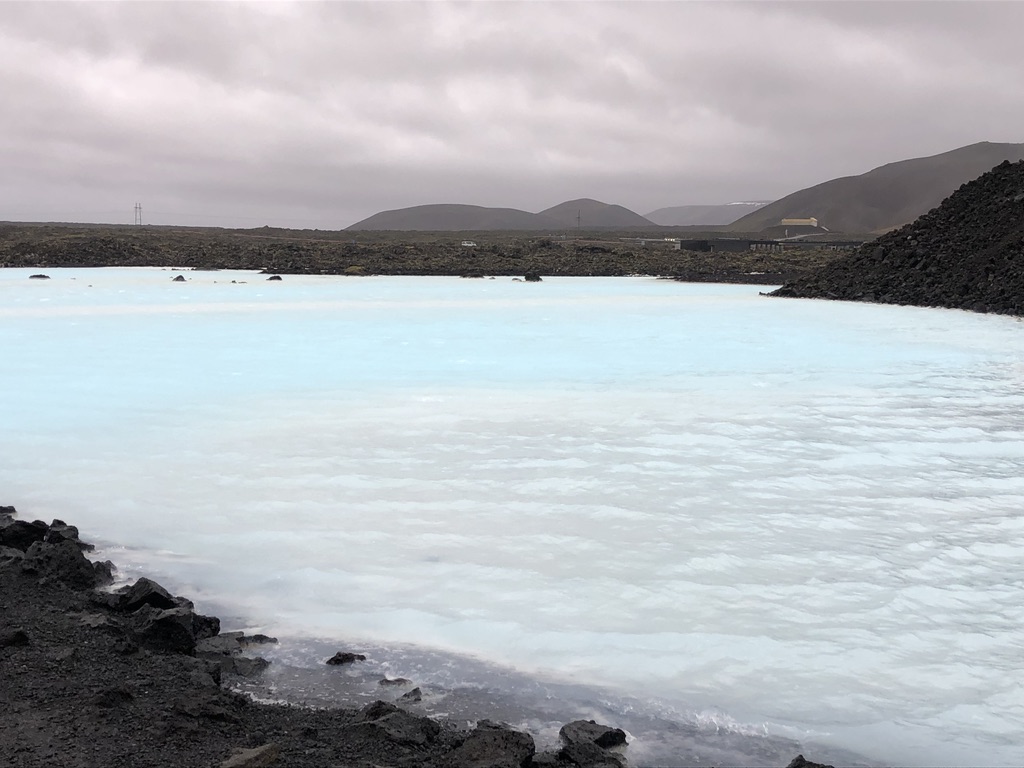
As was the case with Orville Peck and Whitney who were among the artists I was fortunate enough to hear, I made my first appearance this year. Whitney’s falsetto singing drummer Julien Ehrlich is one of my favorite vocalists. He co-founded the group with Max Kakacek after their previous band Smith Westerns, who established these Chicagoans as dudes to keep an eye on, broke up. The group is supremely textured; mixing acoustic and electric guitars with well-placed slide guitar played by Kakacek and an element that sets them apart from most rock groups – a trumpet player, Will Miller. Good on ’em for covering NRBQ’s “Magnet” and Allen Toussaint’s “Southern Nights“. The crooning masked man of country, Orville Peck, fronted a five-piece band and gave a shout out to drag queens and puffins. His songs are sultry and intoxicating; his baritone rich, drawing comparisons to the likes of Chris Isaak, but sometimes skirting the edge of Elvis Presley parody. He visited WFUV in May of this year for an interview and session while Whitney did the same last month.
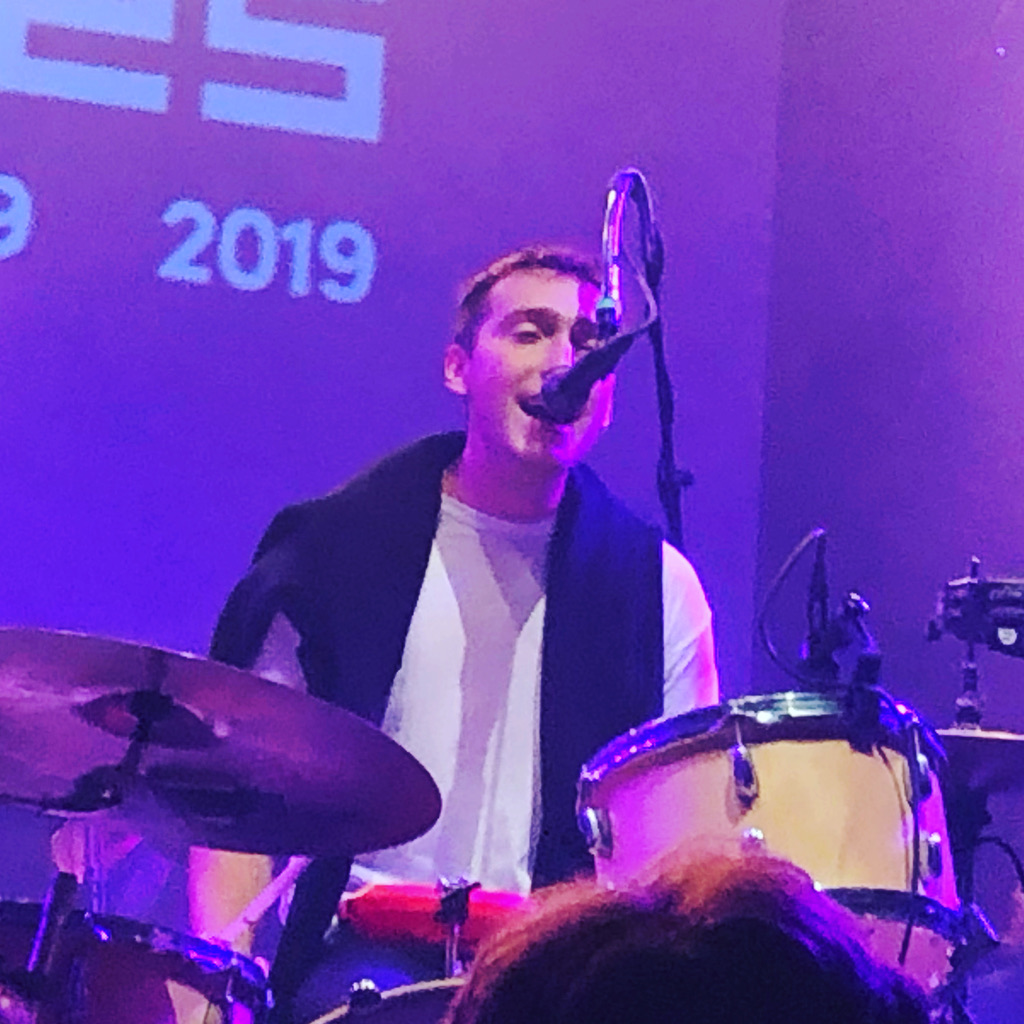
Out of the fifteen or so groups that I heard, The Holy, a rock band from Helsinki and also a quintet, struck me most as being destined to be huge. In their best moments, they were thrilling and with two drummers, they maintained a rhythmic sense of propulsion throughout the set. I was a little skeptical at first eyeing their painfully earnest expressions of intensity in their slow to unfold opening number but I was soon won over by their dynamic and dramatic songs. Their two guitarists served up airy, swirling tones with one generally being drone based and the other laying down slashing lines atop a bedrock of keyboards.

Even if I hadn’t heard any music, I would have had a great time just enjoying the dramatic landscape of lava fields, mountains, and glaciers. I visited The Blue Lagoon on Sunday (11/9) and the weather which delayed the flight to JFK that I hopped that evening was rainy and windy. Despite moments of hail slapping my bald head, soaking in its nourishing 100 degree water piped from 2000 meters beneath the earth was refreshing and rejuvenating. Throughout my stay, it was chilly with highs in the 30’s and the sky was grey.
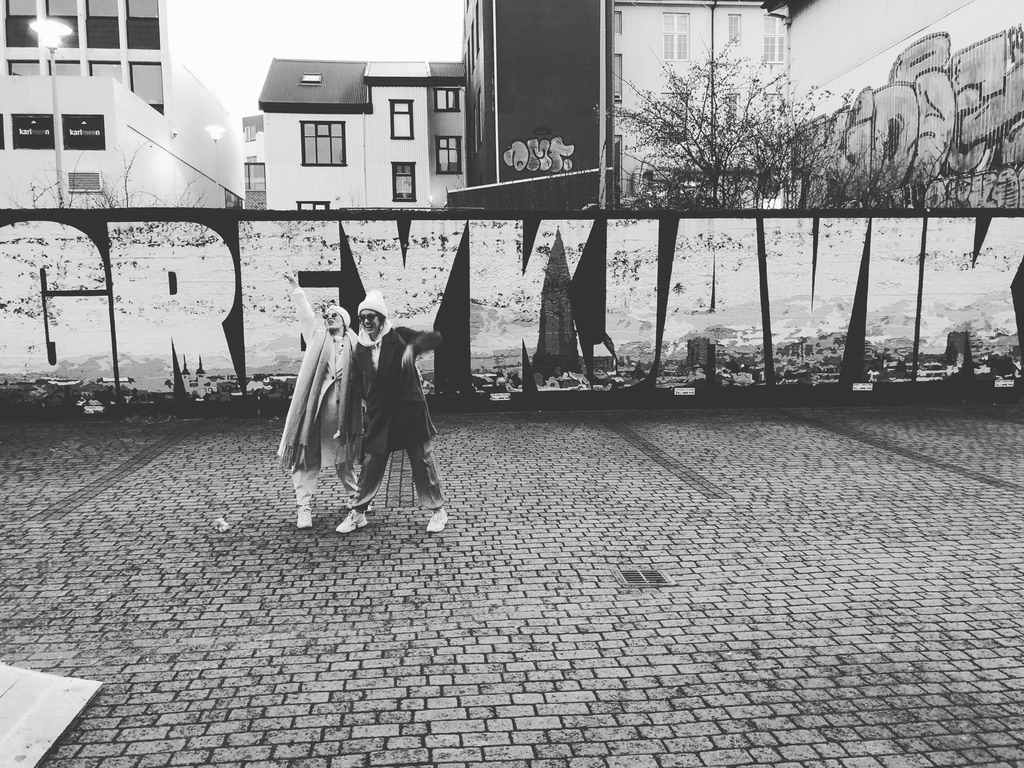
Reykjavik is not the cloudiest city in Europe as Glasgow gets fewer hours of sun per year. However, Reykjavik is a solid number two on that list ahead on the grey-meter of cities like London and Dublin. The latter city is where Pillow Queens hail from. The four women in the group got together only three years ago and, if I had to choose just one, were my favorite discovery of Airwaves. They have the spirit of punk running through everything they do, which can be tough, lean pop, or even sweet with four part harmonies but never for too long. The guitars have got some grit in them and vocalist Sarah Corcoran, who peppers her lyrics with inscrutable Dublin slang, has appealing attitude. The Pillow Queens don’t straddle a line between rock and pop. They land squarely in the former camp. Highlights of the set included Gay Girls that earned them some buzz last year and their new single Brothers which is earning them some more. They are working on their debut album due for release in early 2020.
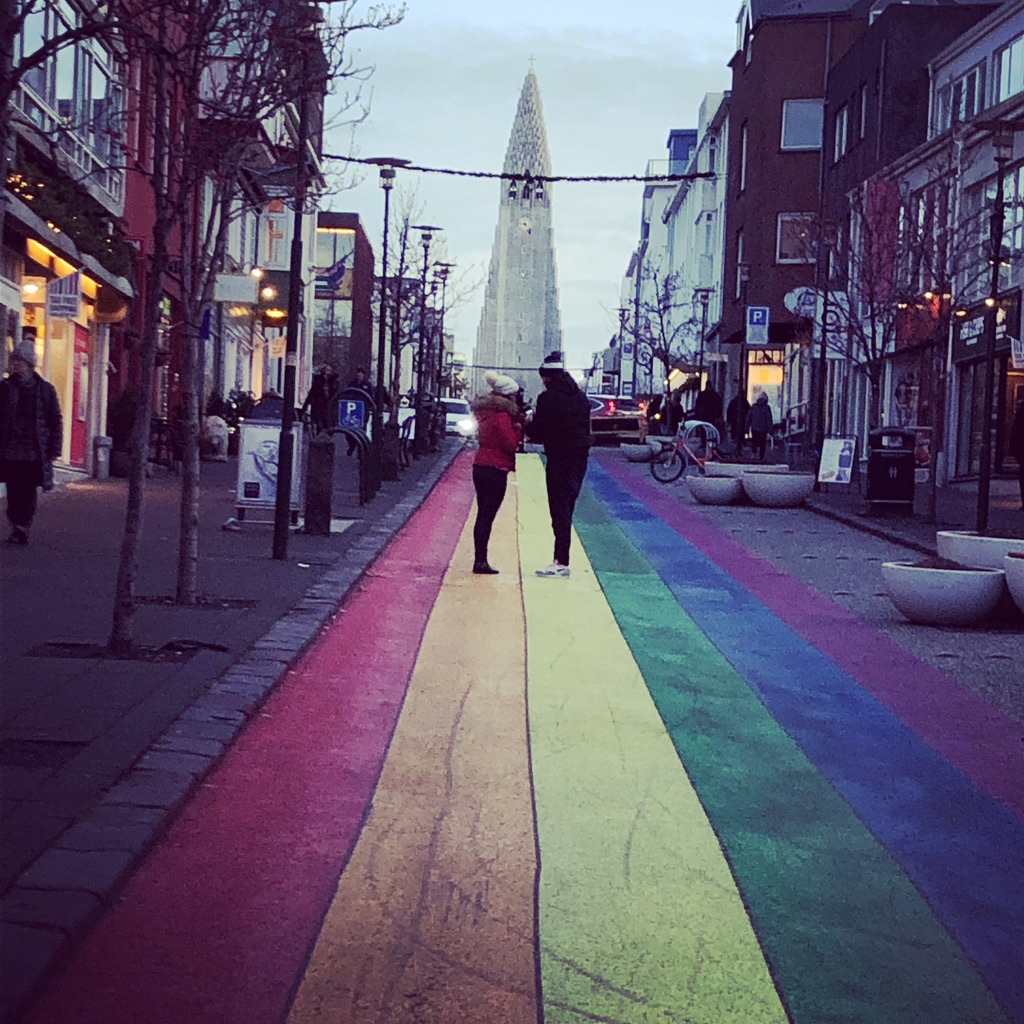
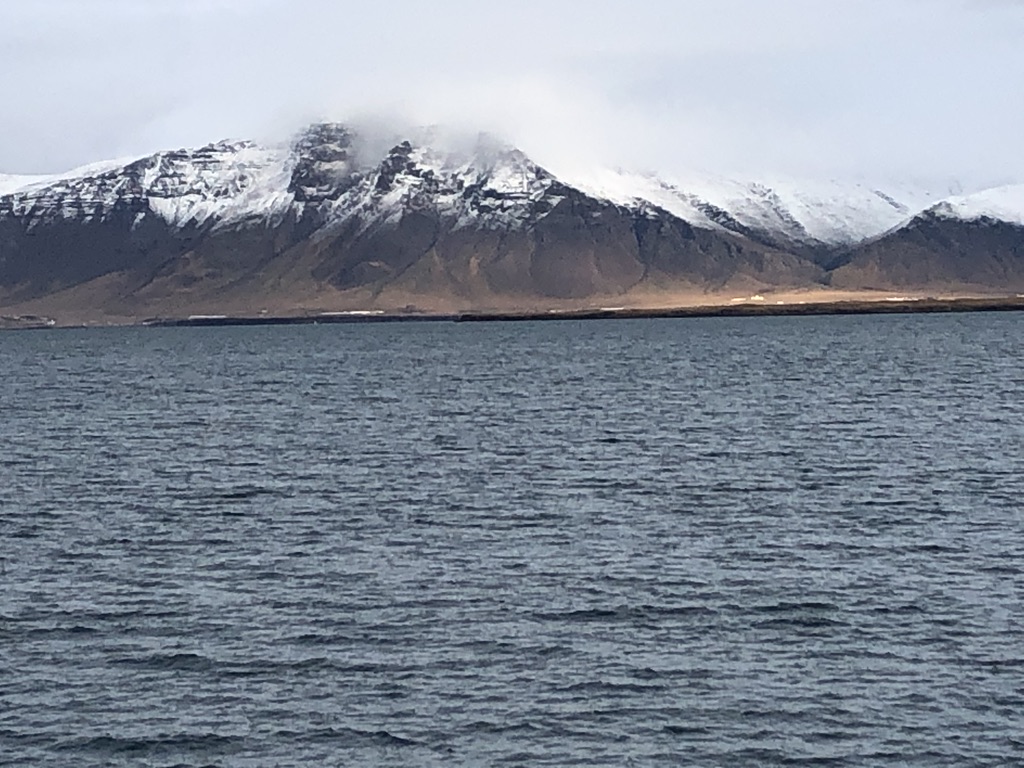
A friend I met from Colorado told me it struck her as a mashup of Denver and Amsterdam while the amount of tattoo parlors, twirly mustaches, and bars made me think of Brooklyn more than once. They love their hot dogs too. Clearly, Reykjavik has its own idiosyncratic vibe and some very distinctive features.

Inspired by Iceland’s volcanic geology, the hypnotic Harpa Concert Hall’s crystals filter, reflect and fragment light. Looks cool in the day; better at night. It has a facade of 714 glass panels, all of which are a different shape and built with an LED light. It’s home to the Iceland Symphony Orchestra and the Icelandic Opera.
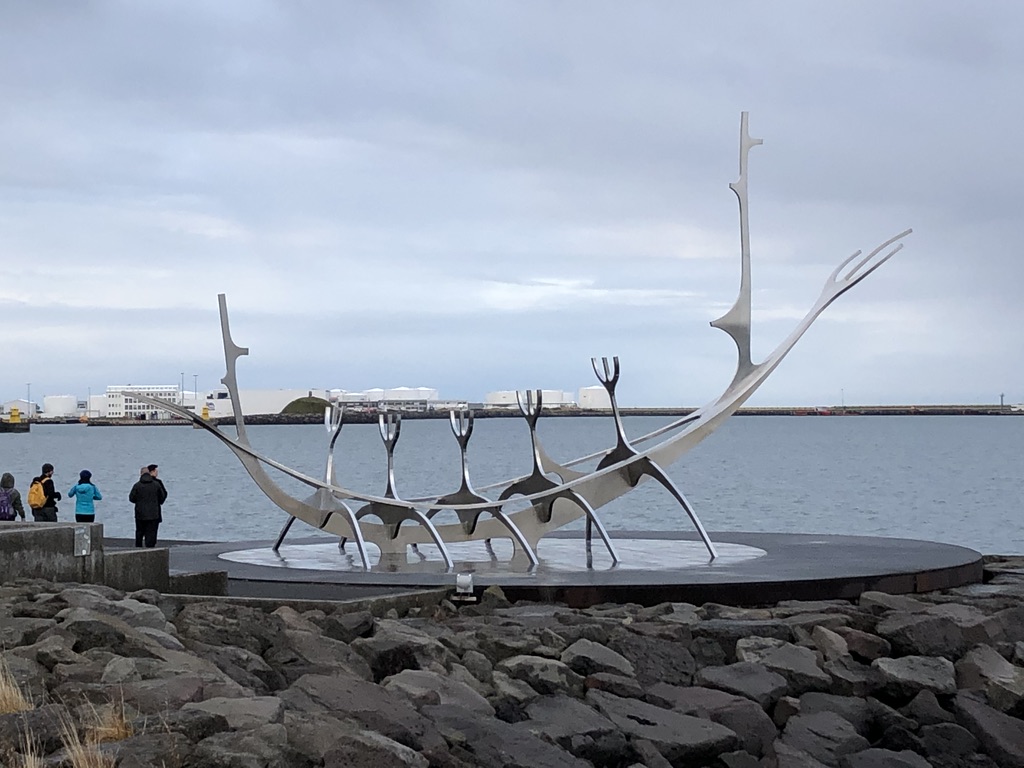
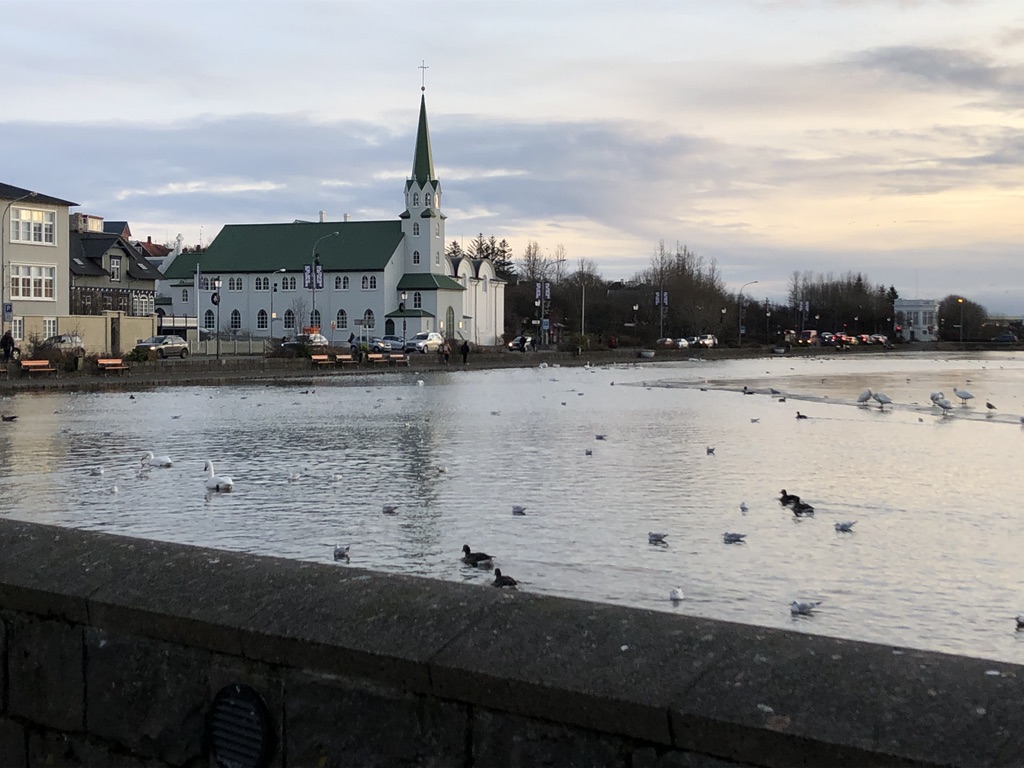 The Reykjavik City Pond, Tjornin, is flanked by many museums as well as the church that John Grant performed in as part of the Iceland Airwaves festival.
The Reykjavik City Pond, Tjornin, is flanked by many museums as well as the church that John Grant performed in as part of the Iceland Airwaves festival.
John Grant, who grew up in Colorado, first performed at Airwaves six years ago and soon after found a way to move to Iceland which has been his homebase ever since. He performed on two consecutive nights this year at Frikirkjan i Reykjavik, a traditional wooden church with a capacity of 500 that was one of the festival’s twelve official venues. (More shows happened in unofficial ones.) I was there the second night and Grant was in excellent form. The shows struck me as triumphant for him as an expat holding court in his adopted hometown. He speaks excellent Icelandic and had the locals laughing at his remarks made in that tongue on more than one occasion. His love of the language has informed some of his work as he explained was the case for “Grey Tickles, Black Pressure” with the former phrase coming from an Icelandic phrase expressing a midlife crisis. The outstanding acoustics enhanced Grant’s vocal gifts and gave the audience a chance to fully absorb the impact of his brutally honest lyrics buoyed by devastating metaphors.
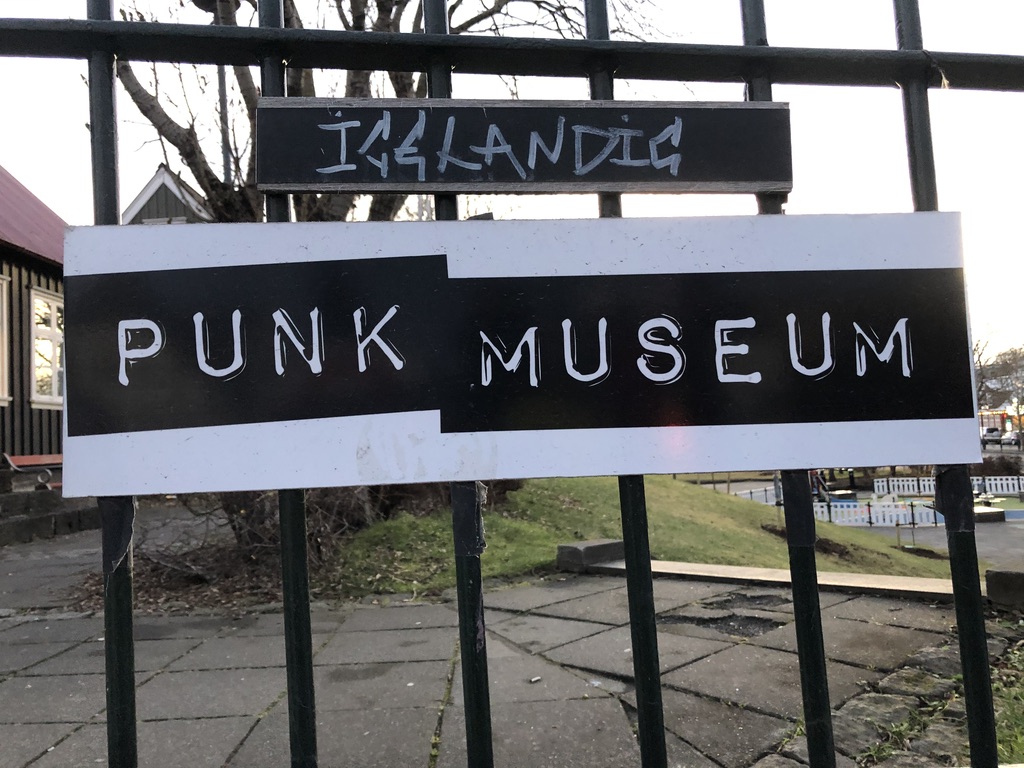
The fact that I got caught in two moshes goes a long way towards illuminating the enthusiasm of the fans, both local and international, who turn up for the festival that’s the heart of the Icelandic record industry. Legitimate mosh pits formed during performances by Auðn and Hatari.
Auðn are part of Iceland’s extremely healthy Black Metal scene and their ferocious, sludgy (and yeah a little scary) set on Thursday was the most exciting gig that I made. Their name I understand is pronounced, kind of, as Oh Then as the eth or O with the squiggly cap corresponds somewhat in this case to TH. In any case, for style and cool it trumps even the umlaut about the O in Motörhead.
The vocalist sang in a shriek familiar to fans of the sub-genre and he had no doubt gargled with razor blades before taking the stage. I can’t remark on what he was singing about as I couldn’t understand a word but I assume Satan was involved. (I would hope so!) Auðn have chops of doom and their elastic melodies and colossal sonic tsunami make them a band to seek out if, to paraphrase Austin Powers, that kind of thing is your bag…baby. The mosh pit, like the band, was a little dangerous but I gamely served as kind of a back wall, mixing it up with those in the pit proper while protecting those behind me. (Even though some big dudes were bouncing around, they all showed good pit etiquette and kept their elbows close to their bodies.)
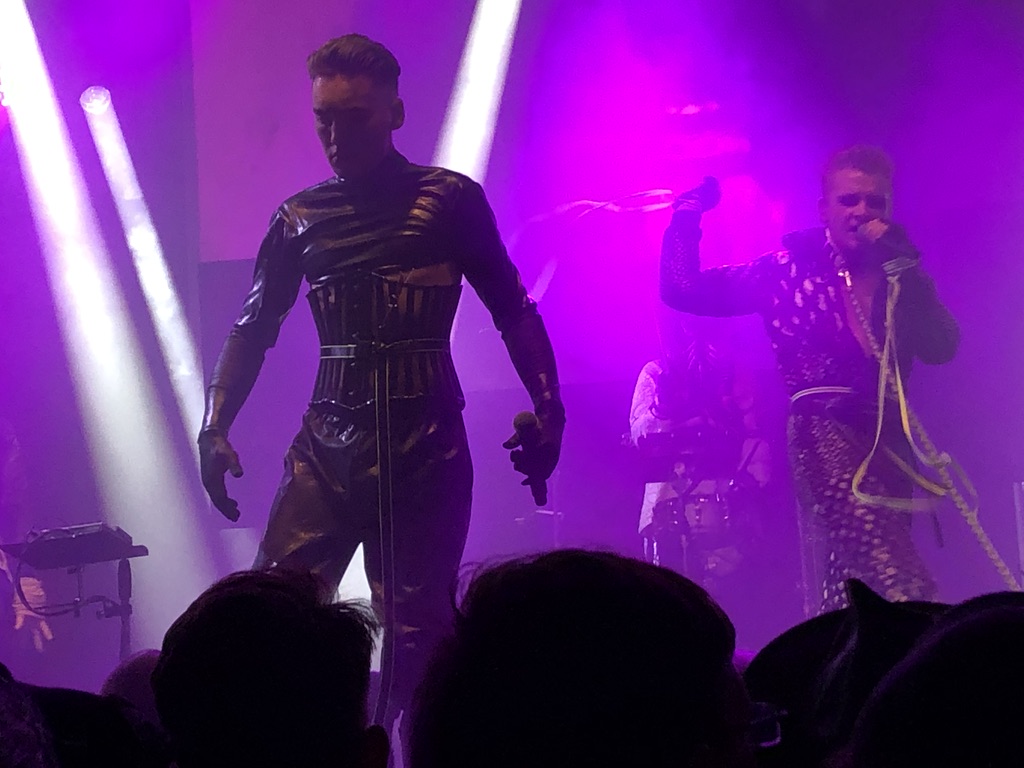
Hatari offered songs built on simple synth beats that scanned techno and sounded as if they’ve heard Nine Inch Nails, Ministry, and Sisters Of Mercy records. The music though, seemed largely beside the point. They are all about spectacle. The three guys who are the full-time members were dressed in full-on bondage attire: dog collars, a Hannibal Lecter style restraint, and a lot of shiny PVC. The two female dancers and their choreographed moves were distracting in the best sense. The group, who also hail from Iceland, have gained attention with their anti-capitalist stance and provocative statements to the press.
I caught three other groups native to the most sparsely populated country in Europe: Seabear, Mammut, and Foreign Monkeys.
Seabear has shown up on the international musical radar; for the past decade or so and the acclaim they’ve gained is well deserved. They trade in crafty compositions rooted in folk that have distinct parts, sometimes in different time signatures. The fiddle player and mix of male and female voices are the group’s secret sauce. Like the other shows by Icelandic groups, the crowd for Seabear included plenty of local people.
A rock band that strike an appealing balance between darkness and light and one of Iceland’s most popular groups, Mammut is a five-piece starring three women who have been playing together since 2003, when they were aged between 13 and 15. They play with the kind of chemistry and intuition that comes only with such long associations. Singer Katrina Kata Mogensen AKA Kata exudes a genuine and undeniable charisma whose unique stage moves no doubt appeared more singular as she is well along in a pregnancy. She’s a powerhouse whose voice propels the group’s songs whose hooks aren’t generally super wide but are accessible through a vaguely psychedelic haze. Initially they resisted singing in English as they felt it didn’t suit their songs but they’ve embraced it on recent work. Mammut visited WFUV in 2017. Here’s video that I didn’t shoot…
Finally, if you’re a fan of say Helmet, track down Foreign Monkeys who were playing so loudly in my hotel lobby on Thursday afternoon that I could hear how delightfully heavy they were from my room.
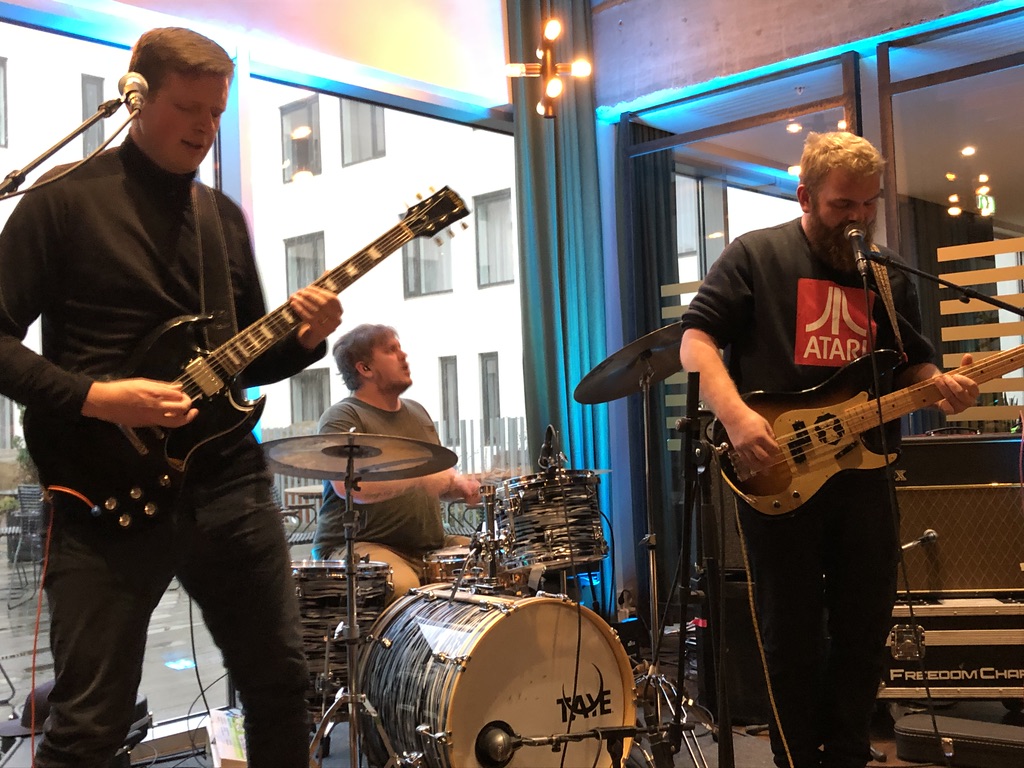
They were even better on the first floor than the fifth! At Airwaves, sometimes all you have to do is keep your ears open.


